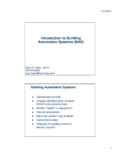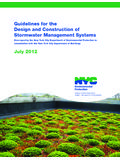Transcription of “Performance Management: Building a Culture of …
1 performance management : Building a Culture of Continuous Improvement . Adrian B. Guardia PhD, SPHR. May 9 10, 2013. San Antonio Human Resource management 2013 Symposium performance management : A continuous process of identifying, measuring, developing the performance of individuals & teams. Aligning performance with the strategic goals of the organization. (Aguinis, 2007). performance Organizational management Culture Organizational Culture : A pattern of shared basic assumptions that the group learned as it solved its problems of external adaptation & internal integration, that has worked well enough to be considered valid &, therefore, to be taught to new members as the correct way you perceive, think, and feel in relation to those problems.
2 (Schein, 1992). Four Questions the CEO Should Ask about the performance management System Role of the CEO in What is the purpose of our PM system? performance management : 1. Model effective Does our PM process performance support our company goals 2 & objectives? management w/ the executive team. How can we make sure our Establish clear 3 system works? expectations of performance management for all Would our PM process survive a legal challenge? staff. 4. Source: SHRM Foundation, Four Questions the CEO Should Ask About performance management Source: SHRM Building a High- performance Culture '.
3 Past Attempts to Improve performance management Change what is Objectives, behaviors, rated results, competencies Change the Differentiated scales, , rating scale 1 5 or narratives Change the Supervisors, peers, rater customers, self Change the SMART, cascaded, goals individual, team Source: SHRM, Building a High- performance Culture . performance management : Emerging Trends Source: Deloitte, Human Capital Trends 2013 . Alignment & performance management Goals/Values/Policies Customer Understand company Understand customer goals & strategy expectations Understand dept goals Brand performance linked to & fit Understand brand customer Understand how my job promise Adaptability to supports strategy Organization living customer/market Low vs high value brand promise changes activities Resources/decisions Clear priorities consistent with brand Aligned accountabilities promise Aligned performance metrics Source: Society for Industrial and Organizational Psychology, performance management .
4 Strategy Alignment: Strategic Goals Source: Society for Industrial and Organizational Psychology, performance management . Alignment: The Strategic Scorecard Source: Society for Industrial and Organizational Psychology, performance management . Business Impact of Low Alignment Confusing brand Overstaffing, to promise compensate for time lost on low-value Many urgent but not activities important activities Slow strategy execution Non-competitive costs Low teamwork; high due to low productivity conflict across resulting from mis- interdependent units directed activities or Talent loss talent Low customer Burn-out working satisfaction/loyalty hard, but not smart Source: Society for Industrial and Organizational Psychology, performance management performance is multi- dimensional.
5 Behaviors have the capacity to advance or hinder achievement. Developing a High performance Culture Evaluate &. Sustain Improve Behavior Lay the Hold leaders Provide tools accountable Foundation & resources Motivate for Eliminate to drive continuous Change non-value change improvement Assess demands current & Introduce identify new concepts future state Get the right'. people on the bus'. Source: SHRM Building a High- performance Culture '. Drivers of High performance O Clear, agreed upon vision & strategy O Translation of vision & strategy into clear, understandable goals & measures.
6 O Acceptance or passion for vision, strategy, goals among those who are implementing them. O Clarity regarding individual roles & requirements in supporting strategic goals. O Sufficient capabilities to deliver the behaviors needed to reach the goals. O Clear, timely feedback on goal attainment & drivers of those goals. O Meaningful incentives to encourage employees to develop or deploy capabilities to achieve goals. Source: SHRM Building a High- performance Culture '. The performance management Strategic System Documentation Administrative performance management System Organizational Maintenance Communication Developmental Source: Aguinis, 2007.
7 Pre- requisites Mission, Goals, Job Functions Monitor of performance Renewal & performance Action Plan Re- Planning Progress & contracting Development The performance KSAs, Behaviors, Results (standards). management Process performance discussion; performance performance Feedback, Review Execution Observation, Action Plan, Feedback, Follow up Resources, Reinforcement, performance Documentation Assessment Self appraisal; Discussion Source: Aguinis, 2007. Traditional vs Behavior Change Traditional Training Behavior Change O Typically manager only O Training provided for both O Primarily on navigating the managers & employees formal process O Deeper dive, focusing on the knowing/doing gap O Often disconnected from O More individualized using on-the-job realities assessment results as O No accountability for baseline learning or application O Uncovers underlying fears & attitudes that prevent O No reinforcement on the change job O Accountability for learning & application Source.
8 SHRM Building a High- performance Culture ' O Tools to facilitate change Why Do performance management Systems Fail? O performance management vs. performance appraisal O Discipline gap O Accountability O Measurement scarcity or overload O Lack of balance (eg., short vs long term; single vs multiple shareholders O Failure to assess impact in helping execute organizational strategy Source: Society for Industrial and Organizational Psychology, performance management Diagnosing the Causes of Counterproductive Work Behavior O Individual Contributors O Situational Constraints . substance abuse; environmental factors family problemsJob O Context Contributors (resources.))
9 Relationships w/ encouragement). supervisors & co- O Organizational Climate . workers respect; expectations O Feelings of Injustice focused perception of inequity O Job Dissatisfaction O Discretionary effort . Herzberg's Hygiene sub-optimization; doing Factors; Maslow's only the minimum Hierarchy of Needs Source: Society for Industrial and Organizational Psychology, performance management Key Priorities: Improving Discretionary Effort O There must be no discretionary or untapped effort by the organization when it comes to recruiting, hiring, and retention. O Sustained high levels of effort require training, retraining and training again to keep skills sharp.
10 O Supply the equipment, tools, and resources to support excellence. O Organizations that demand optimal effort and performance must be willing to share the rewards. O Work-life balance. Source: SmartBrief, Closing the Discretionary Effort Gap . Dealing with Counter-productive Work Behavior Non-Punitive Approaches Alignment Corrective & Constructive Feedback Self- management training for improvement Positive discipline Employee Assistance Programs Punishment Progressive Discipline Termination Source: Society for Industrial and Organizational Psychology, performance management Strategies to Improve performance management Benefits for Managers Benefits for Employees Communicate the big picture Employees contribute more when they Employees fee more connected & make wiser understand the big picture.






